Last Updated on October 31, 2024 by Ellen
Last Updated on October 31, 2024 by Ellen
Banco Chinchorro off Mexico’s southern Caribbean coast is not to be missed for divers and snorkelers and adventure seekers. It’s an atoll reef, or a reef shaped like a ring. There are three small islands inside the reef.
My husband and I went on a day trip from Mahahual, and we are so glad we did.
As with any diving or snorkeling experience, go when the sea is relatively calm.
Most tour operators won’t want to take you when it’s too rough because the current for snorkelers can be too strong (and divers, too). Also, it’s a 60 to 90 minute boat trip out to the reef so really rough water would make the trip out less than enjoyable.
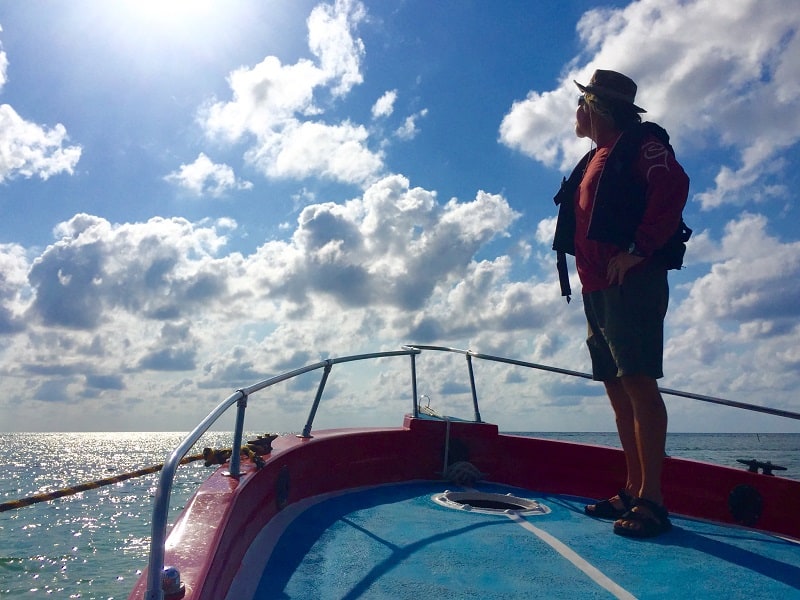
Banco Chinchorro stops on a day trip
Stop 1 at Banco Chinchorro – underwater
Our trip out was great. We were in a dive boat with two engines. It took just over an hour to reach the reef, and another several minutes to find our first spot. Snorkelers got in first, then the divers geared up and went under.
There were two divers in our group and two snorkelers besides me. There were three crew members – the dive master, the snorkel guide and the captain. None of them spoke English. Talk about authentic!
The first spot was beautiful. The water was mostly clear, and the coral came close to the surface so there was enough light to get a few shots in with our old GoPro.
Overall, the water was pretty deep, and much of the fish and coral couldn’t be captured by my camera. The pictures don’t do it justice.
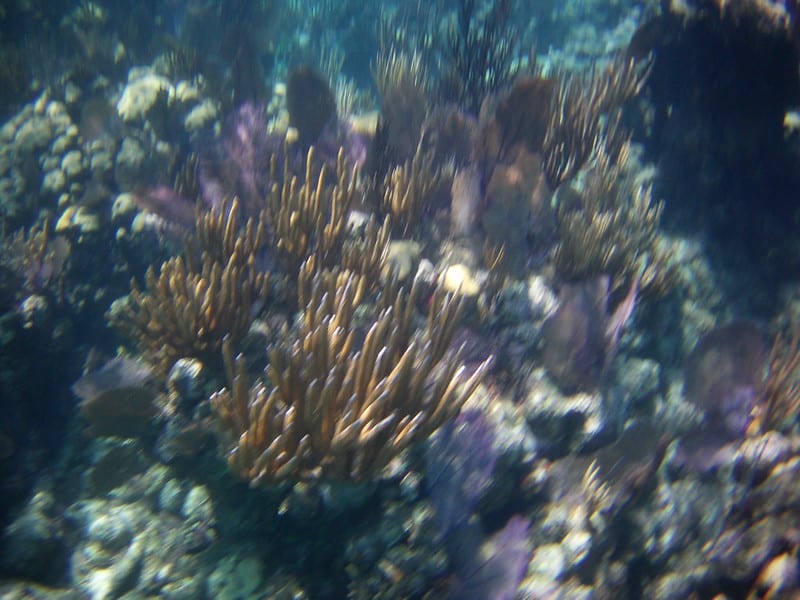
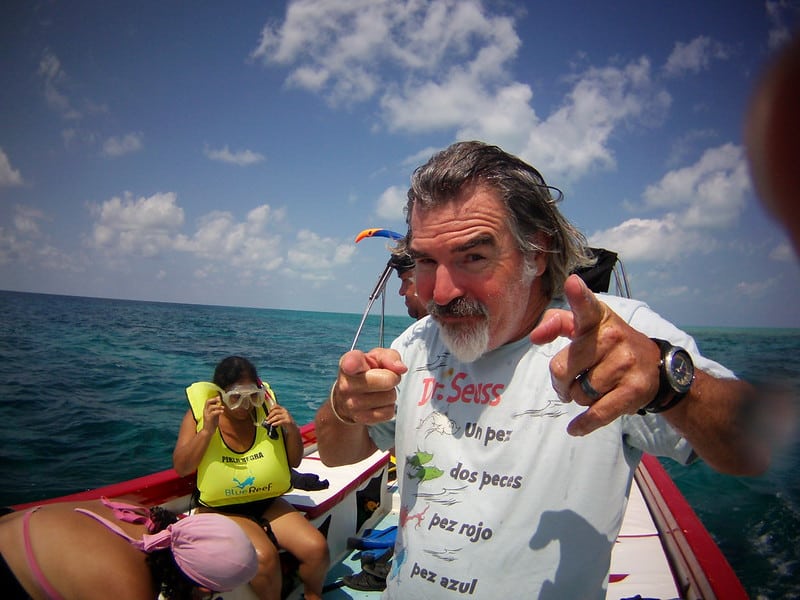
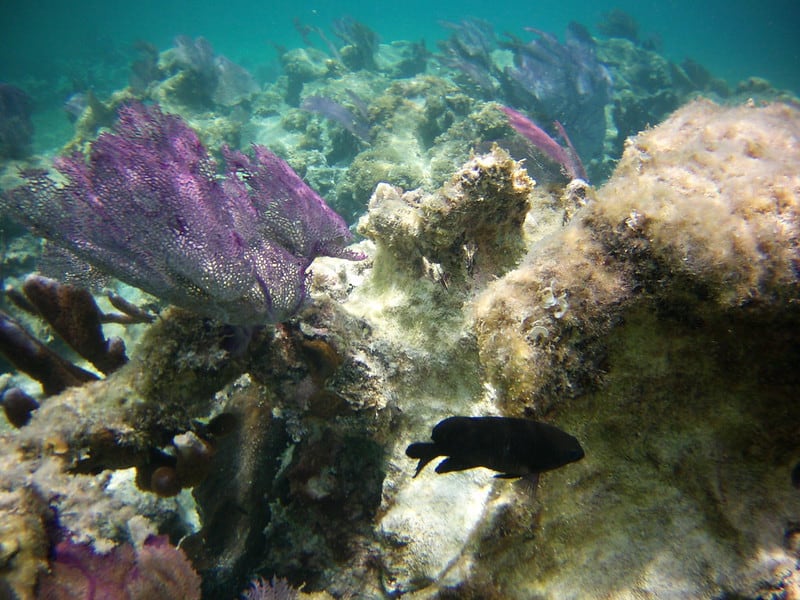
I have never seen so many fish and such intricate, varied coral in my life. I’ve been diving in Jamaica, and around Cancun, and snorkeling all over the place. Banco Chinchorro blows them all away.
I felt so small – so insignificant – to the greater world around me, above and below. I felt like a visitor to an alien world – grateful to be tolerated by underwater creatures.
Several fish curiously looked at me – as if they’d never seen a human being. And maybe they hadn’t – not many people snorkel around out there. It’s a protected area and people need a special permit to be there, the price of which was included in our trip.
I saw baby sharks (no mamas), lobster, barracuda and countless brightly colored fish of all sizes and shapes. It was about an hour and 10 minutes in the water. I was swimming against a current most of the time, and was starting to get tired. Once we were back on the boat, we jetted over to the divers to get them.
My husband said he was equally in awe at life underwater on his first dive down.
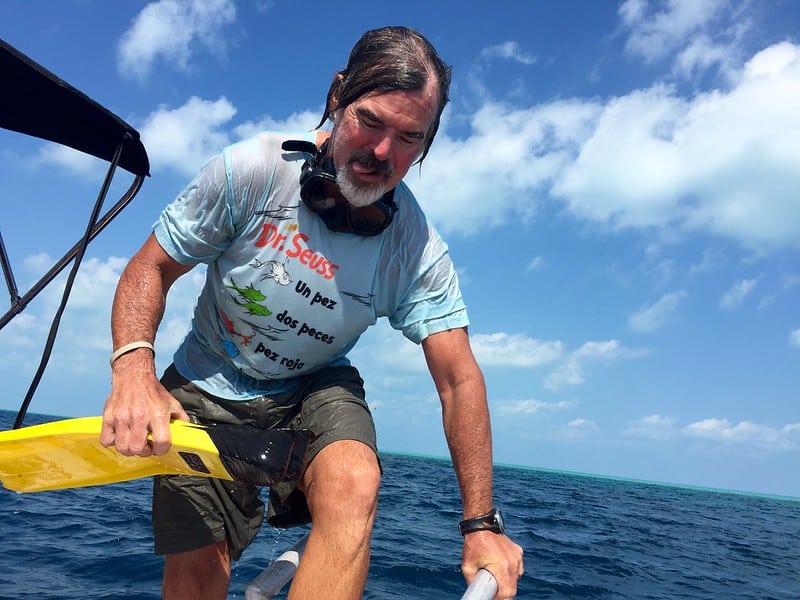
Stop 2 at Banco Chinchorro – Cayo Centro
After the first trip into the water, we went to one of the islands inside the atoll. We visited the largest, though still small, island – Cayo Centro.
Just offshore from Cayo Centro, we saw homes on stilts. These are for the fishermen who make a living near the reef. But the islands are mostly mangroves and under environmental protection so no permanent structures can be build, without government authorization.
There are a couple of research and government buildings on Cayo Centro. There also are a few structures for fishermen to live on land during lobster season, but these are only seasonal, and during our visit, they were vacant.
Our dive master and snorkel guide cut down some fresh coconuts, and we had sandwiches in the shade.
We took a short walk around the small island and we saw several large iguanas, many blue crabs and about five different crocodiles.
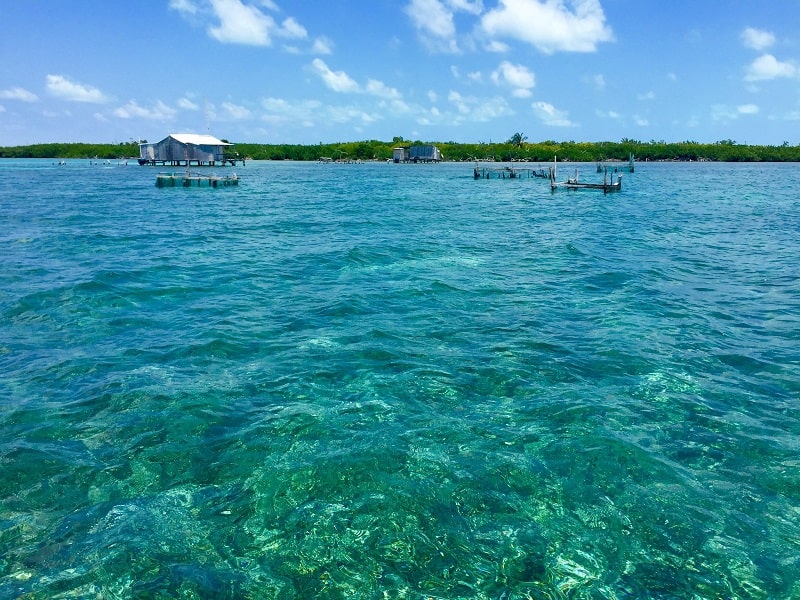
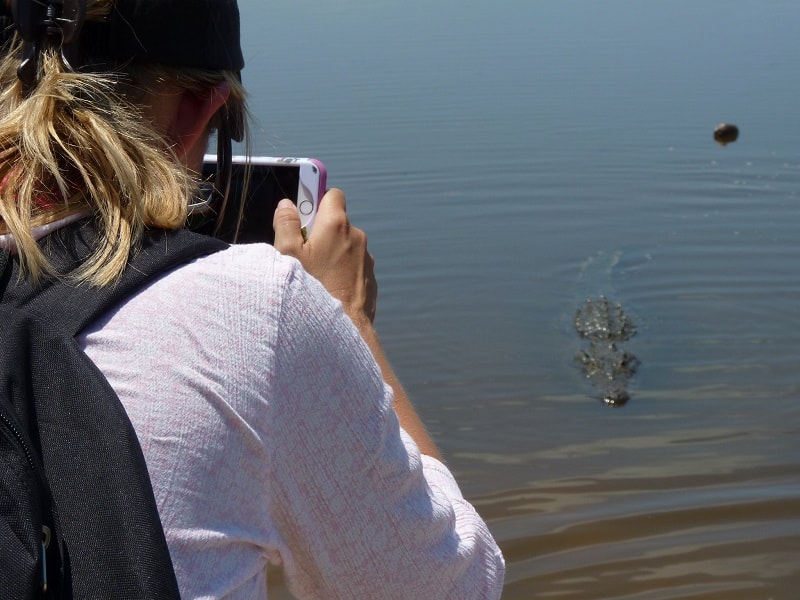
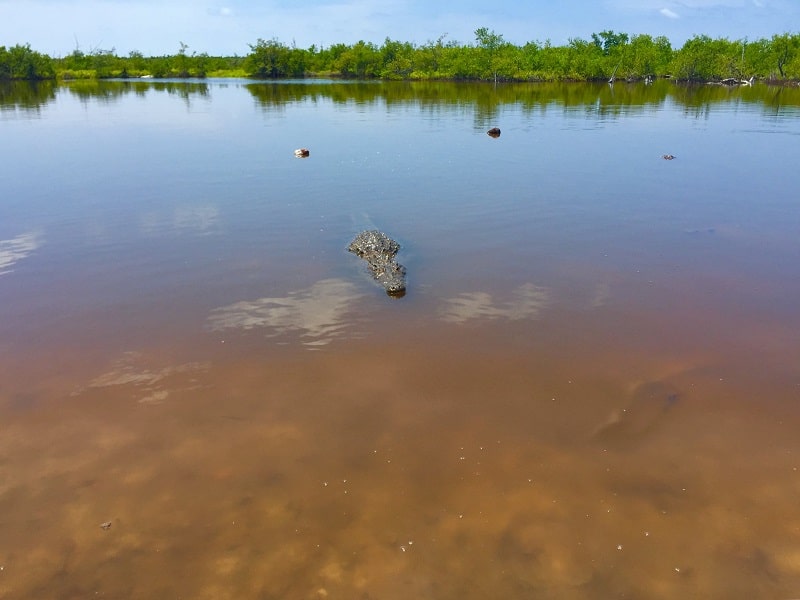
It felt a little like that old, horrible show from the 1970s – Land of the Lost.
Our guides threw coconuts into the water and the crocodiles came closer to inspect what could be a possible lunch. But once they got closer to us on the shore, they would just stop and look at us. Thankfully.
Stop 3 Banco Chinchorro – back underwater
After about a 90 minute break on Cayo Centro, we got back on the boat and went to underwater spot number two. Here is where my husband said the terrain was incredible underwater.
He said it’s clear why divers from all over the world come here. Tedly said they went to what looked like a large underwater hill with amazing fish and coral.
He said he did struggle a little bit with the current on the second dive in the afternoon.
At the surface, we snorkelers struggled a lot with the current at the second water location. A couple hung onto the life ring the guide had brought out – and never let go.
Still, it was a good snorkel, though not as amazing as the first one.
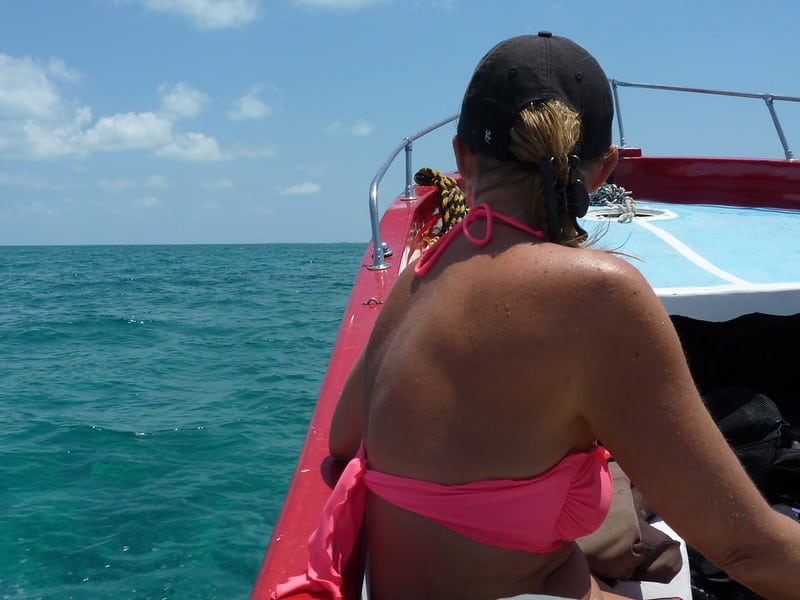
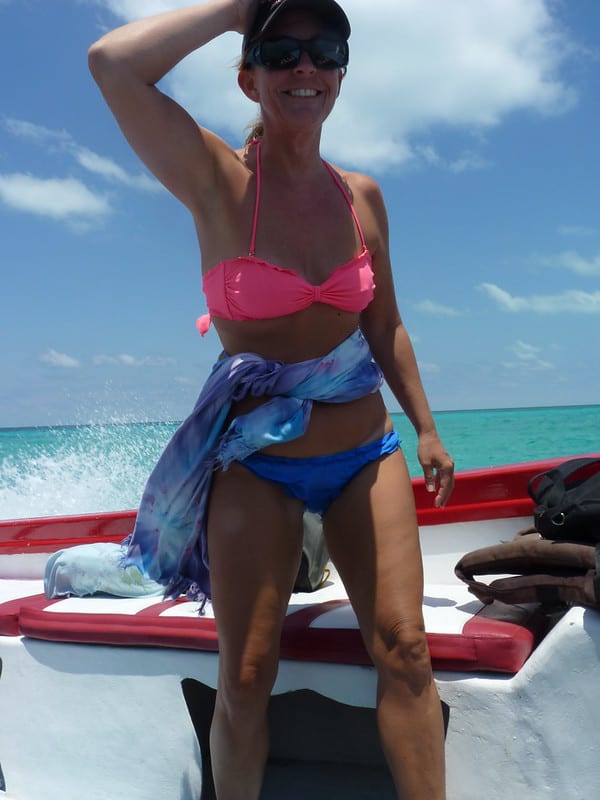
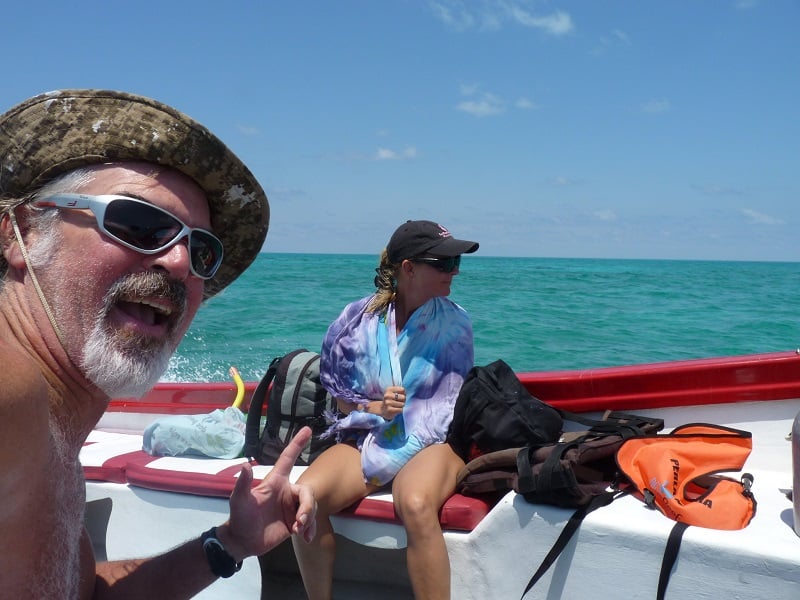
I can’t stress enough: go when the sea is calm and the sun is out blazing full force.
If you are not a decent swimmer, take a floatie. If there current is strong, wear a life jacket. I’m a good swimmer, but I still like to plop my belly on a floatie and/or will wear a life jacket in strong currents. Once I’m in position, I like to just float and watch — and not move. It’s relaxing, no matter the conditions.
Related: How to snorkel the easy, cheap way
Don’t forget to tip the guys giving you the tour and taking you out to this special place. These people are so knowledgeable and helpful and they want you to have the time of your life because not that many people go.
What Banco Chinchorro cost us
It seems most tour groups out of Mahahual won’t go with less than five people.
We went with a tour arranged by Pepe Dive Mahahual and the boat and crew were by Bucaneros in Mahahual. Tourists from the two places were combined to reach the needed magic number of five people needed to go for the trip.
We paid 2,200 pesos for two dives, and 1,800 pesos for my two snorkels, all gear, the boat ride out there, the permit needed to be at Banco Chinchorro, lunch and plenty of water and soda, plus a lifetime of memories.
In dollars: that’s roughly $230 at the 2016 exchange rate. (Note: it was $200 when I looked at the exchange rate in October 2019.)
Pepe’s website is here. (Note, as of April 2023, Bucanero’s website was not working.)
Splurge: but worth it!
Yes, it was a splurge for us, but how often will we be back in this part of the world after we move on from here? And why not see something so amazing while we are here? We lived well that day. And oh, what a great trip it was!
This post was updated in 2019, and again in 2021, and again in 2023. It was first posted in 2016.
More adventures in Mexico:
- Secret and private cenotes near Tulum
- Campeche: charming colonial city
- How Mexico changed me for the better
- Xcalak: a colorful Mexican fishing village

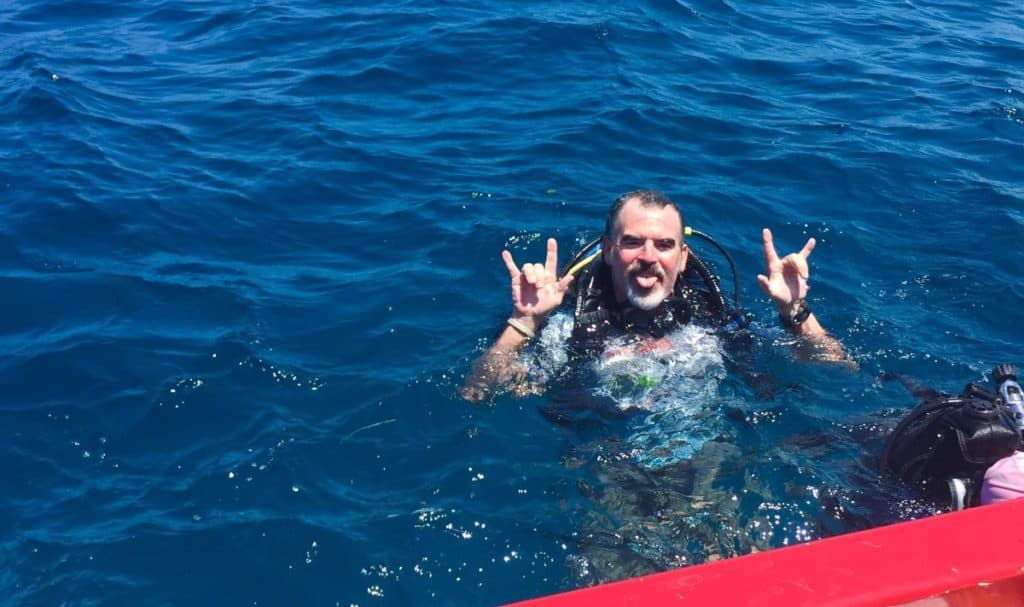
If your feet get cramps using fins, that means that they are either too tight or the wrong fit for your feet. I spend a lot of time in the water and when I was without my good fins, I bought some – cheap ones – bad move, my feet cramped and hurt – so the fit is everything and it should be fairly loose. Thanks for the great write up, we will definitely take this trip next February, going to the area just to snorkel.
Captain Christy